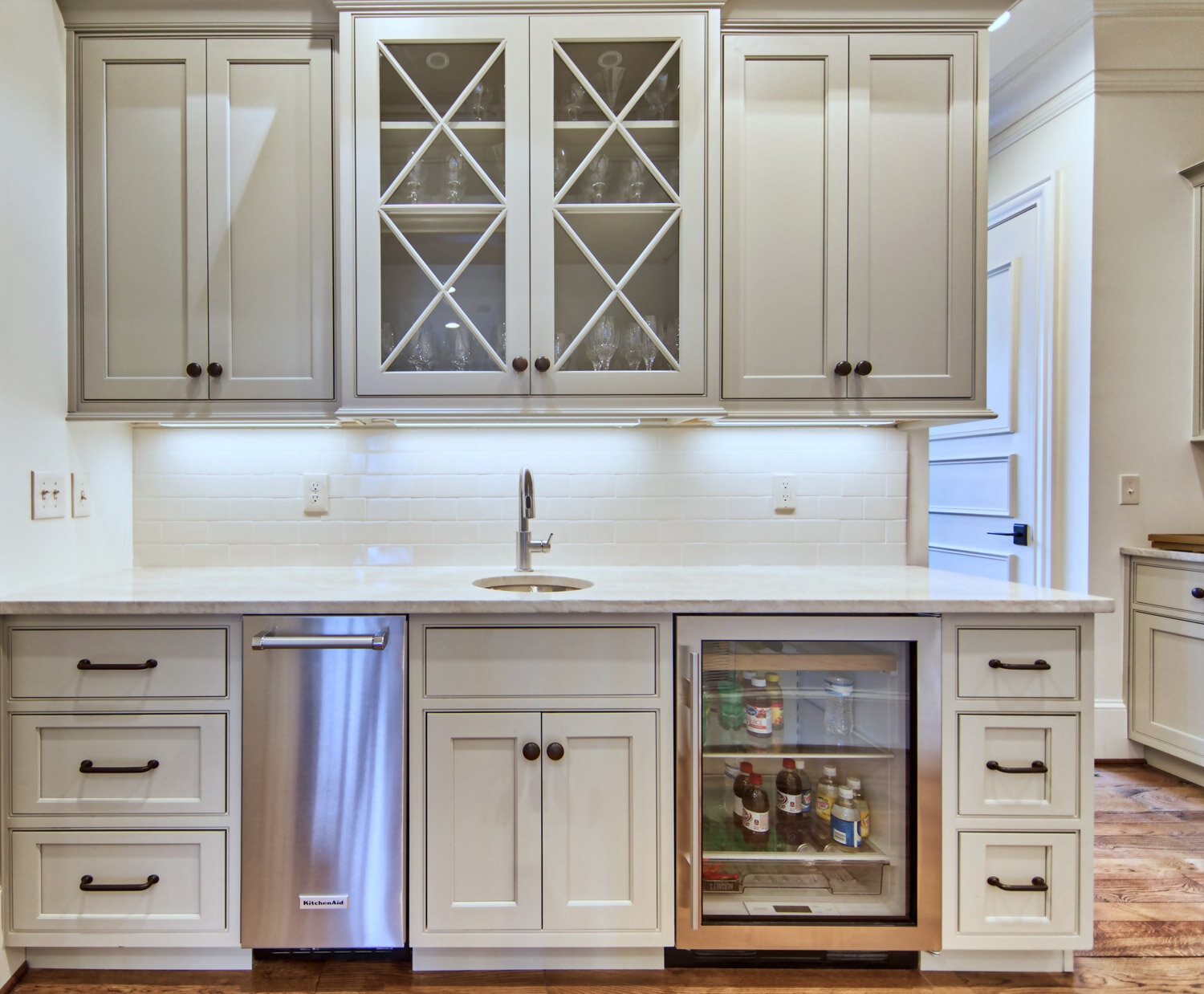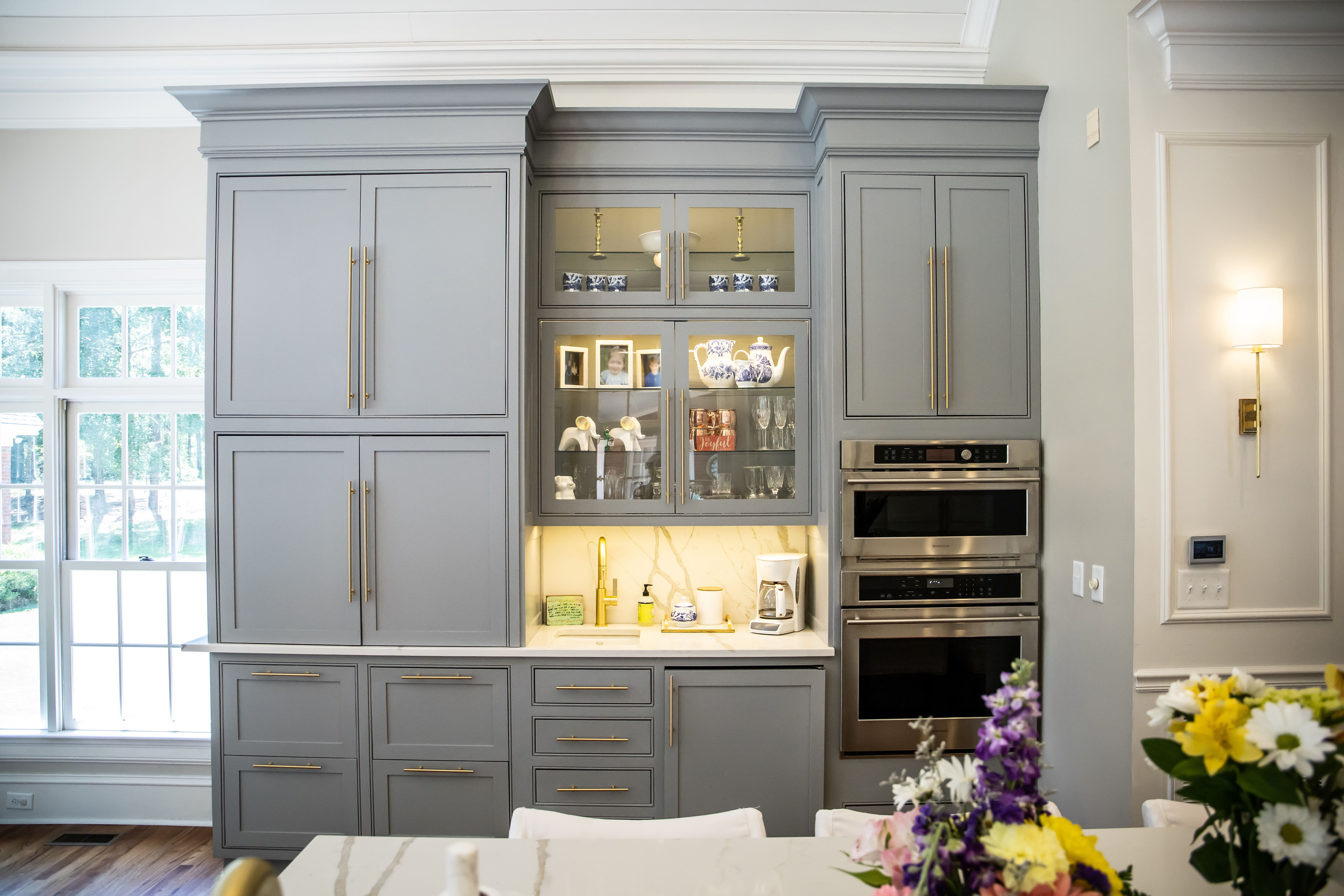Causes of Mismatched Kitchen Cabinet Doors
Mismatched kitchen cabinet doors are a common problem, often stemming from a variety of factors ranging from simple wear and tear to extensive renovations. Understanding these causes can help homeowners address the issue effectively, whether through repair, replacement, or embracing the unique aesthetic.
Renovations and Replacements
Renovations often lead to mismatched doors. Replacing individual damaged doors with new ones can result in slight variations in color, finish, or even style, especially if the original cabinets are older and the replacements are from a different manufacturer or a different production batch. Similarly, expanding a kitchen might necessitate purchasing additional cabinets that don’t perfectly match existing ones. Even seemingly minor alterations, like changing cabinet hardware, can highlight discrepancies if the doors aren’t perfectly uniform.
Types of Damage Leading to Mismatches
Various forms of damage can cause cabinet doors to look different from each other. Scratches, often resulting from everyday use, can mar the surface and create a noticeable difference between affected and undamaged doors. Dents, typically caused by impacts or dropped objects, can leave lasting impressions, altering the door’s flatness and appearance. Water damage, from leaks or spills, can lead to warping, discoloration, or even mold growth, drastically changing a door’s condition compared to its undamaged counterparts.
The Impact of Age and Wear
Age and wear are significant contributors to mismatched cabinet doors. Over time, exposure to sunlight, heat, and moisture can cause fading, discoloration, and warping. Frequent use and cleaning can lead to scratches, dulling of finishes, and overall deterioration. These changes accumulate unevenly across different doors, leading to a patchwork appearance where some doors look significantly older or more worn than others. For example, cabinet doors near the sink might show more water damage than those on the opposite side of the kitchen.
Different Cabinet Door Styles Creating Mismatches
Even new cabinet doors can create a mismatched look if they are of different styles. A kitchen might have a mix of shaker, raised panel, or flat panel doors, leading to a visually inconsistent appearance. Even subtle differences in door profile, such as slightly varying thicknesses or molding details, can be noticeable when placed side-by-side. For instance, incorporating a modern slab door style into a kitchen with traditional raised panel doors will clearly create a mismatched aesthetic.
Comparison of Causes, Visual Impact, and Solutions
| Cause | Visual Impact | Potential Solutions | Example |
|---|---|---|---|
| Renovations/Replacements | Slight variations in color, finish, or style | Careful selection of replacement doors, refinishing existing doors | Replacing a single damaged door with a new one from a different batch resulting in a slight color difference. |
| Scratches/Dents | Surface imperfections, altered door shape | Repairing scratches, replacing damaged doors | A deep scratch on one door contrasting with the pristine surface of others. |
| Water Damage | Warping, discoloration, mold growth | Repairing or replacing damaged doors, addressing water source | A warped door near the sink due to a leaky faucet. |
| Age/Wear | Fading, discoloration, uneven wear | Refinishing all doors, replacing severely damaged doors | Doors near the stove showing more discoloration and wear than those further away. |
| Different Door Styles | Visually inconsistent appearance | Replacing all doors with a uniform style, embracing the eclectic look | A mix of shaker and flat panel doors in the same kitchen. |
Repairing and Replacing Mismatched Kitchen Cabinet Doors

So, you’ve got a kitchen cabinet door situation. A mismatch. Not ideal, right? But fear not, intrepid kitchen warrior! Fixing this isn’t as daunting as it might seem. We’re diving into the practical solutions – from patching up a slightly scuffed door to swapping out a completely rogue panel. Let’s get this kitchen looking uniform again!
Refinishing and Repainting Damaged Cabinet Doors
Refinishing or repainting damaged cabinet doors is a cost-effective way to improve their appearance and match them to existing doors. This approach is ideal for minor damage like scratches, discoloration, or minor water damage. Success depends heavily on careful preparation and the right techniques. For example, scratches can often be filled with wood filler, sanded smooth, and then stained or painted to match the surrounding area. Discoloration might respond well to a thorough cleaning followed by a coat of paint or stain. However, for significant damage like deep gouges or water damage that has caused warping, replacement might be a more practical solution.
Replacing Individual Cabinet Doors for a Uniform Look
Replacing individual doors offers a more comprehensive solution for significant mismatches or irreparable damage. This involves carefully removing the old door, measuring the opening, and selecting a replacement door that matches the existing style, material, and color. Precise measurements are crucial to ensure a proper fit and a seamless integration with the existing cabinetry. Consider the type of hinges and hardware used on the existing doors to ensure compatibility with the replacement.
Considerations for Choosing Replacement Cabinet Doors
Choosing replacement doors involves several key considerations to ensure a harmonious look and functionality. Material selection is crucial, with common options including wood (solid wood, plywood, MDF), thermofoil, and laminate. Each material has its own advantages and disadvantages regarding durability, cost, and maintenance. Style should align with the existing cabinetry, considering features like panel profiles, door styles (e.g., shaker, raised panel, flat panel), and overall design aesthetic. Color matching is critical for achieving a unified look; consider obtaining color samples from paint stores or cabinet manufacturers to ensure a precise match.
Step-by-Step Guide for Replacing a Single Mismatched Cabinet Door
Replacing a single cabinet door is a manageable DIY project. Here’s a step-by-step guide:
- Gather Tools and Materials: Screwdriver (likely Phillips head), measuring tape, pencil, safety glasses, new cabinet door, new hinges (if needed), possibly wood filler and sandpaper for minor adjustments.
- Remove the Old Door: Carefully remove the hinges from the old cabinet door and the cabinet frame. Take note of the hinge placement and any special considerations.
- Measure the Opening: Accurately measure the cabinet opening’s height and width. This is crucial for ensuring the new door fits correctly.
- Install the New Door: Attach the new door hinges to the new door and then carefully attach the hinges to the cabinet frame, aligning them with the existing hinge locations.
- Adjust and Secure: Ensure the door is properly aligned and closes smoothly. Tighten all screws securely.
- Install Hardware (if needed): Replace any knobs or pulls to match the existing cabinet hardware.
Resources for Finding Replacement Cabinet Doors
Finding replacement doors that match existing ones can involve several avenues. Local home improvement stores often carry a variety of cabinet doors in different styles, materials, and colors. Online retailers offer a wider selection, but it’s important to carefully review dimensions and specifications to ensure compatibility. Cabinet manufacturers may offer replacement doors for specific cabinet lines, providing the best chance for a perfect match. Custom cabinet shops can create bespoke doors to match your existing cabinetry exactly, although this is usually the most expensive option. Checking online marketplaces for used or salvaged cabinet doors can be a cost-effective alternative, but it requires more effort in finding a matching door.
Aesthetic Solutions for Mismatched Kitchen Cabinet Doors

So, you’ve got mismatched kitchen cabinets. It’s not the end of the world! In fact, with a little creativity and some strategic planning, those mismatched doors can become a unique design feature, adding character and charm to your kitchen. Let’s explore some ways to transform a potential eyesore into a stylish statement.
Camouflaging and Highlighting Mismatched Doors
The key to successfully managing mismatched cabinets lies in either cleverly concealing the differences or, conversely, embracing them and making them a focal point. Subtle camouflage works best when the differences are minor. Highlighting, on the other hand, is perfect when the contrast is bold and intentional. A unified color palette, regardless of door style variations, can achieve a surprisingly cohesive look. Alternatively, if your cabinets have significant differences, consider emphasizing those differences with strategic placement and lighting. For instance, a grouping of darker cabinets can serve as an attractive anchor point against a backdrop of lighter cabinets.
Strategic Placement of Decorative Elements, Mismatched kitchen cabinet doors
Decorative elements can effectively draw the eye away from mismatched doors. Consider these options:
- A striking backsplash: A bold and visually interesting backsplash can act as a powerful distraction, drawing attention away from any inconsistencies in the cabinetry.
- Open shelving: Strategically placed open shelving can visually break up the monotony of the cabinet runs and highlight decorative items, thereby minimizing the focus on any mismatches.
- Artwork and wall decor: Interesting artwork or wall decor can create a visual focal point, shifting the observer’s attention away from the cabinets.
Paint and Finishing Techniques for Unifying Cabinetry
A fresh coat of paint can work wonders in unifying mismatched cabinets.
- Monochromatic scheme: Painting all cabinets in the same color, even with varying shades, creates a unified look. Consider a slightly darker shade for lower cabinets to add depth.
- Two-tone approach: A two-tone scheme, where upper and lower cabinets are painted different colors, can create a visually appealing contrast that minimizes the impact of mismatched doors. This is especially effective if the doors have similar styles.
- Distressing techniques: Distressing techniques, such as applying a glaze or creating a faux-shabby chic look, can create a unified feel, even if the doors are of different materials or styles. The distressed effect will make the cabinets look as if they belong to the same family.
Using Contrasting Colors and Styles
Instead of trying to hide the differences, you can embrace them and create a visually exciting space.
- Bold color blocking: Use contrasting colors to create a visually dynamic space. For example, paint some cabinets a vibrant teal and others a crisp white. This creates a modern and eclectic feel.
- Mixing styles: Combine different cabinet styles to create a unique and personalized look. For instance, blend traditional shaker cabinets with modern slab-door cabinets.
Unifying Mismatched Cabinets with Decorative Hardware
Consistent hardware can dramatically improve the overall look of mismatched cabinets.
- Imagine a kitchen with a mix of cherry and oak cabinets. Replacing all the existing knobs and pulls with sleek, brushed nickel hardware creates a unified, modern feel. The hardware becomes a cohesive element, drawing the eye away from the differing wood tones.
- Consider a kitchen with a mix of styles—some cabinets have raised panel doors, others have flat panel doors. Using large, ornate pulls on all the cabinets, regardless of door style, can create a unified, traditional look. The substantial hardware adds visual weight and draws the eye to its uniformity.
- For a more eclectic look, you might choose a mix of hardware styles, but maintain a consistent finish (e.g., all black matte). This approach creates a sense of intentional design rather than accidental mismatch.
